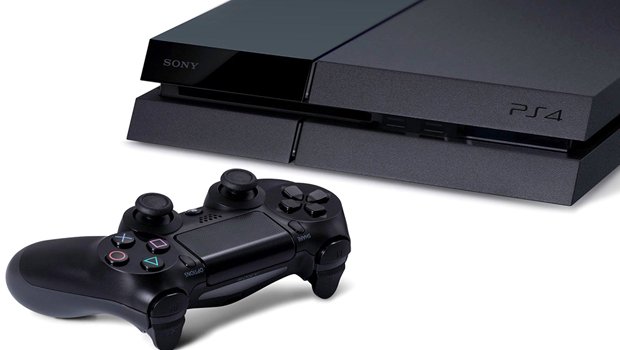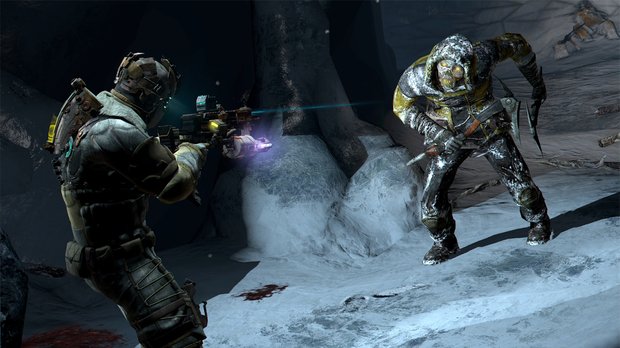Why next-gen consoles can (and must) save middle-budget gaming
The "AAA or GTFO" attitude needs to GTFO
AAA gaming just isn’t working. I’m not sure it can any more. Not as the defacto model for console gaming. The reasons why are written all over the shape of this current generation. We saw the warning signs early on, as a handful of once-prominent developers quickly closed their doors after failed big-budget games. Free Radical, the much-loved British developer of the much-loved TimeSplitters series was one of the first notable casualties, going under after PS3 exclusive Haze failed to impress amid what later transpired to be the tricky, abortive development of a new Star Wars Battlefront game for Lucasarts. Then Mercenaries developer Pandemic rapidly dissolved around the time its new current-gen IP The Saboteur was released.

And the dead pool only continued to fill with the rapidly tumbling bodies of the fallen. What seemed initially to be a brief but sad period of next-gen teething troubles turned into an epidemic of studio closures that has blighted the face of this entire console generation.
It hasn’t let up. Just over a week ago we heard that stalwart Danish studio IO Interactive had lost half of its staff and consolidated its efforts solely on the Hitman franchise. After three attempts to make the mostly excellent Dead Space 3 series a commercial hit, Visceral Games seems to have put the increasingly schizophrenic series on hiatus. Square Enix has branded Hitman: Absolution, Tomb Raider and Sleeping Dogs as commercial failures, despite great reviews and sales of 3.6 million, 3.4 million and 1.75 million respectively. That’s an insane testament to the cost of developing and marketing a AAA game now.

And the signs have been elsewhere too. We’ve seen the death of single-format exclusives. We’ve seen the rapid branching out of megacorp publishers into the cheaper mobile and tablet markets. We’ve seen Activision’s merciless, relentless shotgunning of any internal developer not making a Call of Duty game, however well-received their offerings. Poor Bizarre Creations. Poor, poor Bizarre Creations. I still miss those guys.
The thing is, big-budget console gaming was only viable as the default approach when the budgets weren’t so big. In fact back in the ‘90s and early ‘00s, there wasn’t really such a thing as a AAA game. There were just games. No-one started drawing a distinction between big games, medium-sized games, small games and indie games until the standard-issue scale of production ballooned so large that not everyone could keep up. And herein lies the issue. Not everyone has to keep up, and nor should they be pressured to do so. In fact, screw the notion of “keeping up”. That phrasing implies a minimum standard that must be adhered to in order to remain legitimate, and things just don’t work that way any more.

AAA games are almost the aberration when you look at the entire modern gaming landscape. They’re the big, bloated Michael Bay summer spectaculars standing out amongst the multitude of dramas, romantic comedies, art films and thrillers filling out the rest of your local cinema listings. There’s no need for them to be seen as Just The Way You Make A Game. But they have been, for too long.
This console generation has been utterly binary in the way it has allowed games to exist. XBLA, the PSN and even WiiWare offered up great early hope for smaller developers with great ideas, but in reality file sizes, update limits, promotion issues and rigid pricing structures have limited the download services’ potential as havens for a more eclectic spread of self-published gaming. For much of this generation you were either a small-scale download release or you were on a full-priced disc, thrown out into the wild to fight with the big boys on their terms.
Sign up to the GamesRadar+ Newsletter
Weekly digests, tales from the communities you love, and more
That has to change next-generation. And I don’t say that in a bolshy “This is what I want, so it has to happen” kind of way. I mean that it really has to change. If it doesn’t, then the next-gen is going to be even less healthy for games and the people who develop them.

Of course, this ludicrous situation isn’t a problem on the open platform of the PC. The PC long ago dropped the silly, black-and-white restrictions and labels that still cripple console releases. With Steam and services like it having been around for nearly a decade now, in the verdant pastures of the keyboard and mouse, games are just games again. There’s a healthier, richer, and much better supported ecosystem of scale, tone, subject matter, gameplay and budget in PC gaming. But PC gamers don’t support this more eclectic landscape because they’re inherently a smarter, more cultured, more open-minded bunch. They do it because the way they can buy and play allows them to.
But there’s real hope with the next generation of consoles. Sony has already promised a marketplace with a price range of 99 Cents to $60, and pledged support for indie self-publishing and free-to-play. Some games will come on disc, but all will be online. Crucially, there has been no talk of arbitrary boundaries and distinctions between different types of game. Microsoft’s plans are less clear, but talk of real-money transactions and an openness to free-to-play are definitely heartening, as is the just-announced dropping of patch fees. If things follow through as they should, we could soon have a console landscape similar to that of PC gaming; an organic, fluid space where games of every ambition can find a place, an audience and an appropriate price point, with all available just a click away.

Imagine if Dead Space had been allowed to be a smaller scale, more niche series, able to stick to its survival horror guns instead of being forced to replace them with bigger and more noisy fire-arms in order to compete in the more mainstream AAA arena. Imagine if Bizarre Creations could have put out Blur online as a pure arcade street racer instead of having it turned into a doomed committee-designed mish-mash, intended to appeal to all but ultimately finding the awkward middle-ground between a rock and a hard place. Imagine if IO’s decent mid-tier kids’ game Mini Ninjas hadn’t had to fight on the same turf as Need for Speed: Shift and Halo 3: ODST upon its release. Imagine if IO’s owner, Square-Enix, hadn’t just branded a 3.6 million selling game a commercial failure and fired half of its developer’s staff.
Square-Enix cited “the challenges of today’s market” as the reason for the cull. As I see it, those challenges stem largely from that market’s very shape and form, not the demands of its audience. Steam has proved that. Change distribution and you change the way games are perceived. Change the way they're perceived, and the old attitude of "AAA or GTFO" suddenly becomes a non-issue. And it needs to be.



